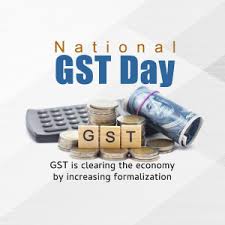Happy GST Day!
Today, July 1, 2025, marks the 8th anniversary of the Goods and Services Tax (GST) implementation in India. GST Day is celebrated to commemorate the significant tax reform that transformed the country’s economic landscape.
A Brief History of GST
The concept of GST was first proposed in 2000 by former Prime Minister Atal Bihari Vajpayee. However, it took several years of deliberation and planning before its implementation on July 1, 2017. The 101st Constitutional Amendment Act, passed in 2016, paved the way for GST introduction.¹
Significance of GST
GST has simplified the taxation system by replacing multiple indirect taxes, such as VAT, service tax, and excise duty, with a single tax regime. This reform has²:
– Unified the Indian Market: Creating a single, unified market for goods and services
– Reduced Tax Burden: Minimizing cascading taxes and compliance burdens
– Increased Compliance: Streamlining tax collection and reducing evasion
Key Features of GST
Some notable features of GST include³:
– One Nation, One Tax: Replacing multiple central and state taxes with a single tax
– Destination-Based Tax: Tax revenue accrues to the state where goods or services are consumed
– Comprehensive Tax System: Covering a wide range of goods and services
Impact on Indian Economy
GST has had a profound impact on the Indian economy, promoting:
– Economic Growth: By reducing tax barriers and increasing compliance
– Transparency: Through streamlined tax collection and reduced corruption
– Competitiveness: By making Indian businesses more competitive globally
As we celebrate GST Day, let’s acknowledge the significant progress made in transforming India’s tax landscape. GST has been a game-changer, promoting economic growth, transparency, and competitiveness. Here’s to many more years of progress and prosperity!


Leave a Reply
You must be logged in to post a comment.